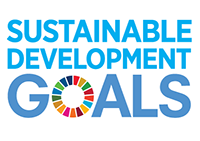Elderly Low-Income Population (after-tax)
Definition:
Percent of low-income persons age 65+, according to the Census Family Low Income After Tax Measure (CFLIM-AT)
Methods and Limitations:
Family units include census families and persons not in census families. Census families are comprised of: 1) couples (married or common-law, including same-sex couples) living in the same dwelling with or without children, and 2) single parents (male or female) living with one or more children. Persons who are not matched to a family become persons not in census families. They may be living alone, with a family to whom they are related, with a family to whom they are unrelated or with other persons not in census families.
Low-income situation of individuals is determined using the Census Family Low Income After Tax Measure (CFLIM-AT). Individuals are defined as having low income if their adjusted after-tax income falls below 50% of the total population median adjusted after-tax income. Adjusted after-tax income is derived by dividing census family income by the square root of the census family size and assigning this value to all persons in the census family. This adjustment distributes income among the members of the census family and takes into account the economies of scale present in larger families, the increasing number of people living on their own and the decline in family size over time.
The information in this indicator is based on the updated methodology for Census Family Low Income After-Tax Measure (CFLIM-AT) statistics derived from the T1 Family File. The updated methodology was introduced in April 2018. Statistics based on the former methodology can be found in CANSIM table 111-0015. For more information on methodological changes, please consult the research paper ‘Methodology Changes: Census Family Low Income Measure Based on the T1 Family File’ (catalogue no. 75F0002M).
As of 2020, COVID benefits are included in income estimates. For more information, consult the Technical Reference Guide for the Annual Income Estimates for Census Families, Individuals and Seniors
Source:

 Elderly Low-Income Population (after-tax) in the Sustainable Development Goals
Elderly Low-Income Population (after-tax) in the Sustainable Development Goals
Click on the SDG to reveal more information
1. End poverty in all its forms everywhere
Extreme poverty rates have been cut by more than half since 1990. While this is a remarkable achievement, one in five people in developing regions still live on less than $1.90 a day, and there are millions more who make little more than this daily amount, plus many people risk slipping back into poverty.
Poverty is more than the lack of income and resources to ensure a sustainable livelihood. Its manifestations include hunger and malnutrition, limited access to education and other basic services, social discrimination and exclusion as well as the lack of participation in decision-making. Economic growth must be inclusive to provide sustainable jobs and promote equality.
Related Elderly Low-Income Population (after-tax) Targets
By 2030, reduce at least by half the proportion of men, women and children of all ages living in poverty in all its dimensions according to national definitions

